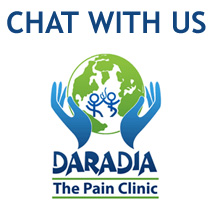Tension Type Headache
Introduction
Tension-type headache is the most common type of primary headache. It is a pain or discomfort in the head, scalp or neck and is often associated with muscle tightness in these areas.
Epidemiology
For most of the population, the first onset of TTH is before the second decade of life. The peak prevalence appears to be between 30- 39 years of age. The lifetime prevalence ranges between 30%- 78%. It is seen in both sexes with female preponderance. The studies show that there is slight decrease in the occurrence with advancing age.
Pathophysiology
- The pathophysiology of TTH is not well understood.
- Genetic factors are mostly involved in the pathogenesis with higher genetic influence for frequent ETTH than infrequent ETTH.
- Recent research suggests neurobiological basis- peripheral pain mechanisms are involved in episodic TTH. Chronic TTH is related to sensitization of pain pathways in the CNS which occurs because of prolonged nociceptive stimuli from peri cranial myofascial tissues.
- Myogenic referred pain caused by active myofascial trigger points in the head, neck, shoulder muscles might contribute to patterns of head pain in individuals with TTH. It is hypothesized that an increase of isometric strength of neck flexors would lead to decrease the pressure pain in CTTH.
- CTTH is associated with chronic rhinosinusitis.
- Nitric oxide mediated central sensitization may be an important mediator in pain mechanisms.
- Chronic TTH is associated with changes in brain structure. MRI showed that patients with CTTH have significant grey matter decreases in areas of the brain involved in nociceptive transmission.
- CTTH is associated with impaired motor learning.
- Psychological factors leading to TTH suggests sympathetic hyperactivity as a possible mechanism.
- Insomnia and poor sleep quality have been associated with TTH and migraine.it should be noted that the association between headaches and sleep disturbances is bidirectional.
Classification
- Episodic TTH (ETTH):- Infrequent episodic, Frequent episodic
- Chronic TTH (CTTH)
- Associated with peri cranial tenderness
- Not associated with peri cranial tenderness
Diagnostic criteria
| Number of days of headache | TTH type |
| <1 / month | Infrequent episodic |
| 1-14 / month | Frequent episodic |
| ≥15/ month | Chronic |
Diagnosis of TTH is confirmed if there are 10 episodes of any of the above headaches fulfilling the following criteria:
- Headache lasting for 30 minutes to 7 days
- At least two of the following pain characteristics are present
- Pressing or tightening quality
- Mild or moderate intensity
- Bilateral location
- No aggravation by walking stairs or similar routine physical activity
- Both of the following
- No nausea or vomiting
- Photophobia and phonophobia are absent or one but not the may be present
- Not attributed to another disorder.
Pericranial tenderness by manual palpation.
Electromyogram and pressure algometry have limited clinical diagnostic value.
Differential diagnosis
- Medication overuse headache
- Chronic post traumatic headache
- Sinusitis/ eye disease
- Temporomandibular joint disorder
- Idiopathic intracranial hypertension
- Brain tumor
- Psychiatric disorder
- Musculoskeletal disorders (fibromyalgia, arthritis)
- Migraine without aura
Treatment
- Nonpharmacologic techniques
Rarely evidence based. Physical therapy is the most common form which includes relaxation and exercise programs, improvement of posture, hot and cold packs, ultrasound and electrical stimulation. Spinal manipulation is also extensively used. Patients with frequent attacks of TTH are often referred for acupuncture.
Cognitive behaviour therapy significantly improves the patients on measures of headaches, depression, anxiety and quality of life.
Oromandibular treatment with occlusal splints is an attractive option but lacks scientific data.
Biofeedback and relaxation training can be done to reduce the emotional and physiologic arousal that can trigger and exacerbate headache. Isometric strength training of the neck flexors correlates with decrease in pressure pain scores in patients with CTTH.
- Pharmacologic treatment
Acute treatment:
Simple analgesics like aspirin, acetaminophen are used.
Sometimes combination analgesics including caffeine can be more effective, but with frequent use side effects such as rebound headache may emerge.
Acute treatments to be limited to no more than twice per week as they can produce medication overuse headache and undesirable effects on liver, kidneys, GIT and other organs.
- Preventive treatment:
Tricyclic antidepressant amitriptyline is the mainstay in treatment of patients with CTTH.
Mirtazapine a tetracyclic antidepressant is reported to be effective in chronic TTH.
Centrally acting muscle relaxant tizanidine.
Botulinum type A toxin is sometimes used in patients with CTTH.
- Future therapies:
Calcitonin Gene Related Peptide receptor antagonism.
Antagonism of substance P and nitric oxide pathways.
Summary:
TTH is the most prevalent primary headache type worldwide and is associated with significant disability.
Although the current diagnosis is primarily clinical and based on negative associations and by exclusion, a majority of individuals with TTH do not seek medical attention. Thus identifying the factors that characterize TTH as a specific entity has proven difficult.
The interactions between sleep quality, depression and headache and pain sensitivity provide an opportunity for multimodal therapeutic intervention.
For acute treatment, the most common interventions involve the use of simple analgesics. For preventive treatment, the best studied medicine is amitriptyline, but nortriptyline, mirtazapine, tizanidine, and other medications may be used. Future therapies should encompass the new status of knowledge in the pathophysiology of this disorder and may include CGRP receptor antagonism, as well as substance P and the nitric oxide pathways.
References:
- Harrison’s principles of internal medicine.
- Annals of Indian Academy of Neurology.
- Current pain and headache reports.
- Tension type headaches: a review, South African Family practice.
- Tension type headache: A Life- Course Review, Journal of Headache and Pain Medicine.
- Cognitive behaviour therapy for comorbid migraine and/ or tension-type headache and major depressive disorder: An exploratory randomized controlled trial. Behaviour Research and Therapy.
- Sleep disturbances in tension-type headache and migraine. Therapeutic advances in Neurological Disorders.
Author: Dr Priyadharshini V C Moorthy


